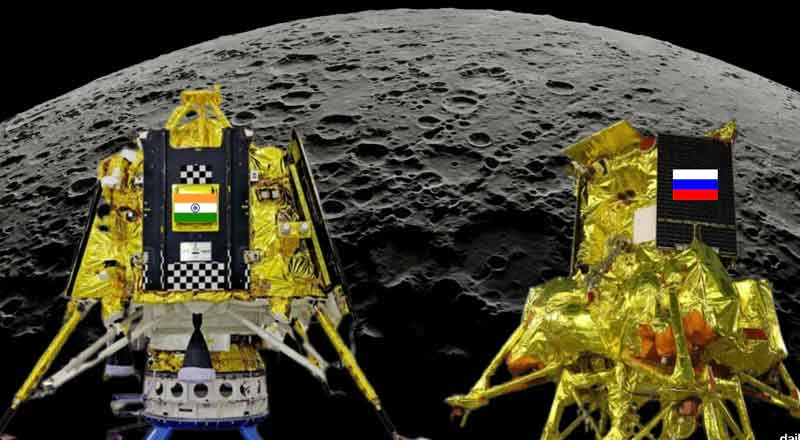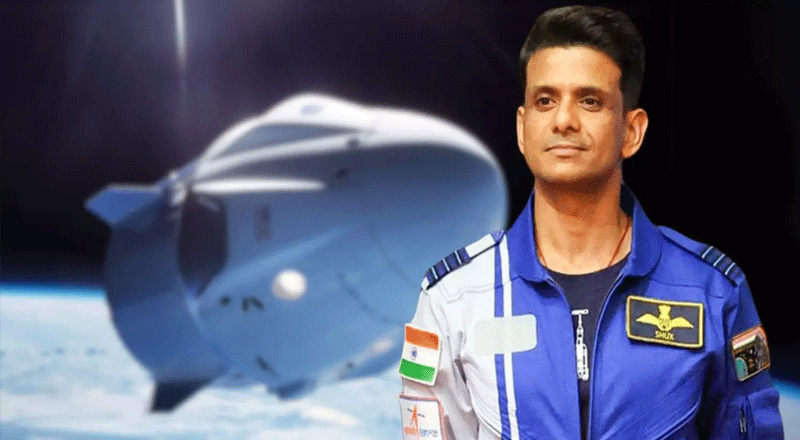- Russia is planning to launch a lunar mission for the first time in nearly five decades.
- The ‘Luna 25’ lunar exploration program is Russia’s first such mission after the ‘Luna 24’ in 1976 during the Soviet Union regime.
- “The Luna-25 will have to practice soft landing, take and analyze soil samples, and conduct long-term scientific research,” the Russian space agency said.
- ‘Luna 25’ launch was fraught with repeated setbacks and delays. The European Space Agency (ESA) withdrew its cooperation from the lunar exploration program after Russian forces invaded Ukraine in 2022, as well as future missions.
- The Russian lunar lander ‘Luna 25’ can touch down on the moon’s surface before the Chandrayaan-3 spacecraft.
- The Russian space agency has informed that both missions will not interfere with one another as they have different planned landing sites.
Russia is planning to launch a lunar mission for the first time in nearly five decades on Friday, in competition with India’s Chandrayaan-3 program. The Russian lunar lander ‘Luna 25’ can touch down on the moon’s surface before the Chandrayaan-3 spacecraft.
According to Voice of America, the Russian space agency announced the Luna-25 lander’s scheduled launch in the early hours of Friday, its first mission since 1976. This launch will mark a significant milestone for Russia as it reignites the country’s lunar exploration program after nearly half a century.
“The Luna-25 will have to practice soft landing, take and analyze soil samples, and conduct long-term scientific research,” the Russian space agency said in a statement. The lander is expected to reach the Moon after five days of the launch and will land on the moon’s south pole.
The developments come as Russian President Vladimir Putin seeks to strengthen cooperation in space with China after its breakdown of ties with Western countries following the invasion last year. The launch seeks to bolster Russia’s position in the global space race amid stiff competition with China.
Ahead of the launch, residents would be evacuated from the village of Shakhtinsky in the Khabarovsk region, where the rocket’s boosters are likely to fall.
According to the National Aeronautics and Space Administration (NASA), Luna 25 has a four-legged base containing landing rockets and propellant tanks. It has eight science instruments, including a gamma-ray and neutron spectrometer, an infrared spectrometer, and a mass spectrometer.
The lander will be launched on a Soyuz-2 Fregat in the Earth’s orbit. It will fire the Fregat again to go into a lunar transfer orbit and from the lunar orbit it will drop down to the surface. It will study the surface regolith and exospheric dust for approximately a full year.
However, the ‘Luna 25’ launch was fraught with repeated setbacks and delays. The European Space Agency (ESA) withdrew its cooperation from the lunar exploration program after Russian forces invaded Ukraine in 2022, as well as future missions.
As per reports, Luna 25’s timeline indicates that the four-legged lander can reach the surface of the moon shortly before or around the same time as Indian Space Research Organization’s (ISRO) Chandrayaan-3 spacecraft. The Russian space agency has informed that both missions will not interfere with one another as they have different planned landing sites.
ISRO earlier announced that Chandrayaan-3 will attempt a soft landing on the moon’s surface on August 23. If Chandrayaan-3 succeeds in landing a robotic lunar rover in ISRO’s second attempt in four years, India will become the fourth country to master the technology of soft-landing on the moon’s surface after the US, China, and the former Soviet Union.
(With inputs from agencies)





